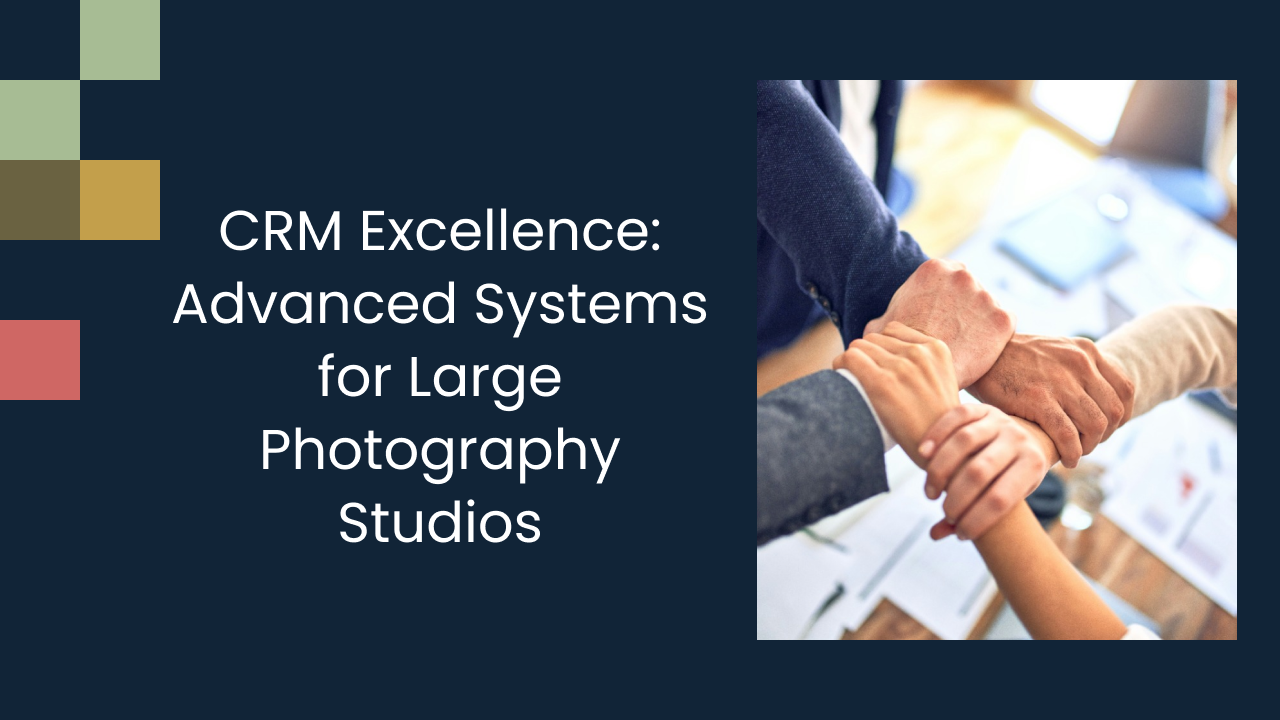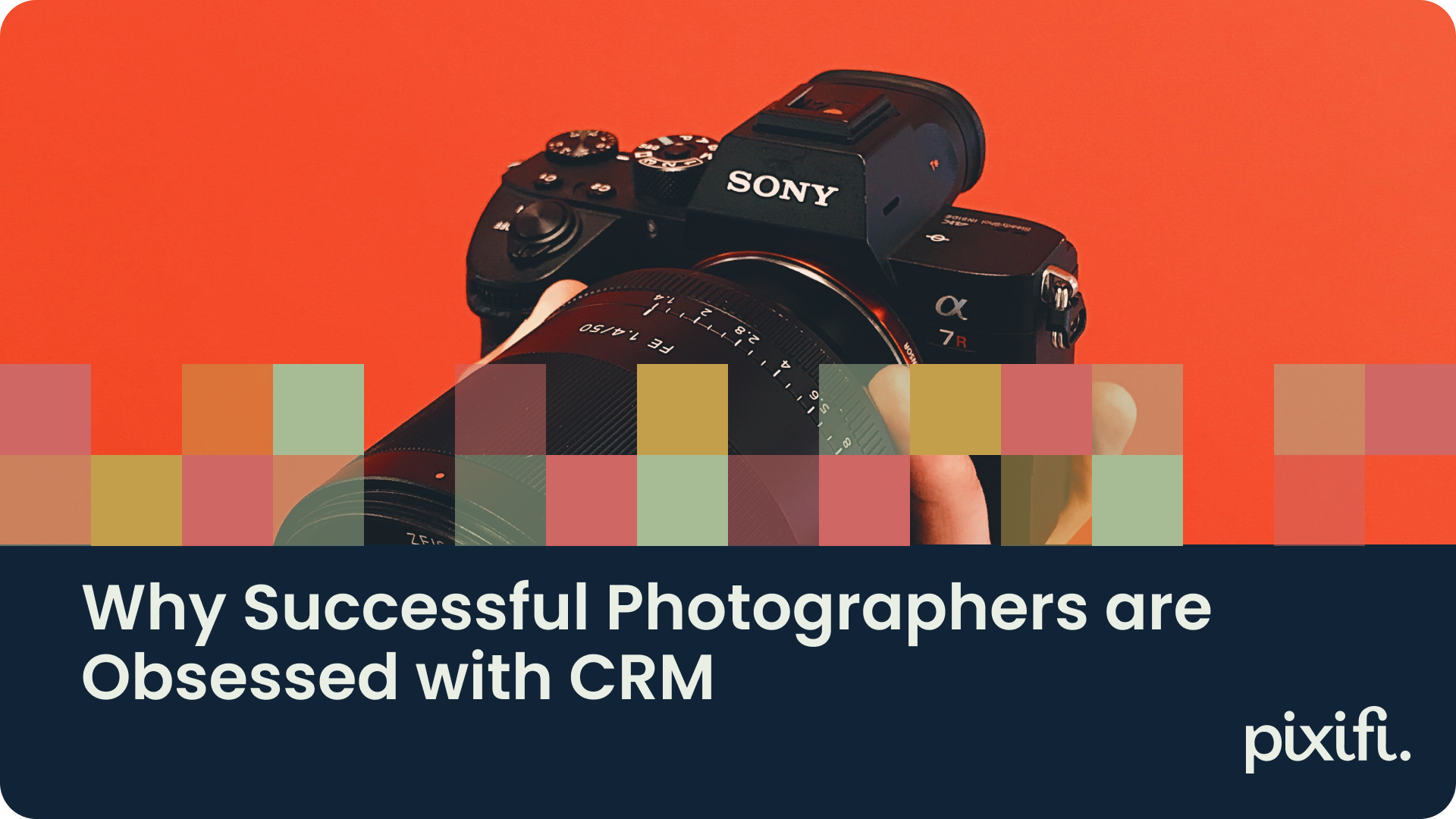The Future of Photography CRM: Trends to Watch
Customer Relationship Management (CRM) software has become an essential asset for photographers to streamline their workflows, enhance customer experiences, and drive business growth. This article explores the evolving world of Photography CRM and the trends that photographers should watch out for in order to stay relevant and successful in the industry.
Understanding the Basics of Photography CRM
CRM, often associated with sales and marketing, has found its place in the world of photography. This technology enables photographers to manage client relationships, automate tasks, and organize their business operations in a systematic manner. By deploying a robust Photography CRM system, photographers can centralize client information, track projects, manage bookings, and efficiently communicate with clients.
One of the key advantages of using a Photography CRM is the ability to segment and target specific client groups. This allows photographers to tailor their marketing messages and services based on client preferences and past interactions. For example, if a photographer specializes in wedding photography, they can create targeted campaigns to reach engaged couples, offering them exclusive packages and discounts. By understanding their clients' needs and preferences, photographers can build stronger connections and increase customer loyalty.
In addition, CRM software offers analytics and reporting capabilities, providing photographers with valuable insights into their business performance and customer behavior. By analyzing data such as client demographics, booking patterns, and revenue trends, photographers can make informed decisions to optimize their business strategies. For instance, they can identify their most profitable client segments and allocate resources accordingly, ensuring a higher return on investment.
The Role of CRM in Photography
CRM plays a crucial role in photography businesses by helping photographers build and maintain long-term relationships with their clients. With a comprehensive CRM solution in place, photographers can effectively track client interactions, upcoming projects, and client preferences. By having a holistic view of their clients' needs and preferences, photographers can deliver personalized experiences and create memorable moments for their clients.
Furthermore, Photography CRM enables photographers to automate repetitive tasks such as appointment scheduling, contract management, and invoicing. This frees up time for photographers to focus on their creative work and build stronger client relationships. For example, instead of spending hours manually sending out invoices and contracts, photographers can set up automated workflows that generate and send these documents with just a few clicks. This not only saves time but also ensures accuracy and consistency in client communications.
Key Features of a Good Photography CRM
When selecting a Photography CRM, photographers should consider key features that will benefit their specific needs. A good CRM solution should offer contact management, project tracking, calendar synchronization, and client communication tools. Integration with other tools such as email marketing platforms and accounting software can further enhance the efficiency of the CRM system.
Additionally, an intuitive user interface and mobile accessibility are important features for photographers who are constantly on the move. Mobile CRM apps allow photographers to access client information, update project status, and respond to client inquiries from anywhere, at any time. This seamless integration of CRM into the photographer's workflow ensures better client management and overall business productivity.
In conclusion, Photography CRM is a powerful tool that empowers photographers to streamline their business processes, enhance client relationships, and drive growth. By leveraging the capabilities of CRM software, photographers can elevate their photography business to new heights, delivering exceptional experiences to their clients and achieving long-term success.
The Evolution of Photography CRM
Photography CRM has come a long way from its early beginnings. In the past, photographers relied on manual processes and spreadsheets to manage their client relationships. However, with advancements in technology and the increasing demand for efficiency, CRM systems have evolved to meet the specific needs of photographers.
Modern Photography CRM solutions offer advanced features such as lead management, email automation, and reporting analytics. These capabilities enable photographers to streamline their lead generation process, automate follow-up emails, and gain valuable insights into their business performance.
The Past and Present of Photography CRM
In the past, Photography CRM software primarily focused on contact management and basic project tracking. It served as a centralized database for client information and communication history. As technology advanced, modern CRM solutions emerged, offering more robust features tailored specifically for photographers.
Today, Photography CRM systems not only manage client relationships but also assist in marketing campaigns, sales tracking, and financial management. They offer integrations with popular photography platforms and tools, allowing photographers to seamlessly manage their workflow without switching between different applications.
Technological Advancements Influencing CRM
The rapid advancements in technology have greatly influenced the evolution of Photography CRM. The emergence of artificial intelligence (AI) and machine learning (ML) has revolutionized the way CRM systems operate.
AI-powered CRM solutions can analyze vast amounts of data, providing photographers with valuable insights into client behavior, preferences, and buying patterns. This enables photographers to make data-driven decisions, optimize their marketing efforts, and deliver personalized experiences to their clients.
Furthermore, cloud technology has transformed the accessibility and scalability of CRM systems. Cloud-based Photography CRM allows photographers to access their data securely from anywhere with an internet connection. It eliminates the need for local server infrastructure and enables seamless collaboration among team members.
Emerging Trends in Photography CRM
As the world of photography continues to evolve, new trends and technologies are emerging in the field of CRM. These trends have the potential to reshape the way photographers manage their businesses and interact with clients.
Integration of AI and Machine Learning
AI and machine learning technologies are increasingly being incorporated into Photography CRM systems. These technologies can analyze large volumes of data, automate repetitive tasks, and offer personalized recommendations based on client preferences. For instance, AI-powered CRM can suggest potential upsell opportunities, recommend suitable packages, and even generate customized pricing based on various factors.
By leveraging AI and machine learning, photographers can enhance their sales processes, improve customer experiences, and gain a competitive edge in the market.
Mobile CRM for Photographers
With the increasing reliance on smartphones, mobile CRM apps have become essential tools for photographers. Mobile CRM allows photographers to access client information, manage projects, and communicate with clients on the go. This flexibility enables photographers to stay connected and responsive, even when they are away from their office or studio.
Mobile CRM apps also offer features such as location-based reminders, real-time notifications, and seamless synchronization with other devices. These functionalities further enhance the productivity and efficiency of photographers in managing their businesses.
Cloud-Based Photography CRM
The shift towards cloud technology has opened up new opportunities for photographers to leverage cloud-based CRM systems. Cloud-based Photography CRM offers numerous benefits, including scalability, accessibility, and data security.
Photographers can easily scale their CRM system based on their business needs and adjust resources accordingly. Moreover, cloud-based CRM allows seamless collaboration among team members, regardless of their locations. Data security is also enhanced, as cloud providers implement robust security measures to protect client information.
The Impact of CRM Trends on Photography Businesses
The evolving trends in Photography CRM have a significant impact on photography businesses, transforming the way they engage with clients and operate their processes.
Enhancing Customer Engagement through CRM
A comprehensive CRM system helps photographers improve their client engagement by offering personalized experiences and timely communication. By understanding client preferences, photographers can tailor their services to exceed expectations and create memorable experiences.
CRM also enables photographers to maintain ongoing relationships with clients through email marketing, appointment reminders, and personalized offers. These strategies foster client loyalty, leading to repeat business and positive referrals.
Streamlining Business Operations with CRM
Efficient business operations are vital for the success of photography businesses. A Photography CRM system streamlines various processes, including lead management, project tracking, and financial management. Automation reduces manual errors, saves time, and improves overall productivity.
CRM systems also provide valuable analytics and reporting features, enabling photographers to identify trends, track revenue, and analyze the success of marketing campaigns. This data-driven approach helps photographers make informed decisions to optimize their business strategies and drive growth.
Preparing for the Future of Photography CRM
The future of Photography CRM is constantly evolving, with new technologies and trends emerging on the horizon. To stay ahead of the curve, photographers need to adapt and invest in future-proof CRM solutions.
Adapting to New CRM Technologies
As technology continues to advance, photographers must be open to adopting new CRM technologies that align with their business goals. Keeping up with the latest trends and innovations ensures that photographers stay competitive and deliver exceptional services to their clients.
It is essential for photographers to regularly evaluate their CRM systems and assess whether they are meeting their current needs. Upgrading to newer versions or migrating to more advanced CRM platforms can provide significant benefits in terms of improved efficiency and enhanced client satisfaction.
Investing in Future-Proof CRM Solutions
Investing in a future-proof CRM solution is crucial for the long-term success of photography businesses. By choosing a CRM platform that can adapt to changing trends and accommodate future advancements, photographers can ensure that their businesses remain competitive and relevant.
It is important to consider scalability, flexibility, and integration capabilities when selecting a Photography CRM. A future-proof CRM should be able to integrate with emerging technologies, support mobile applications, and offer customization options to meet the unique needs of photographers.
In conclusion, Photography CRM has become an indispensable tool for photographers to manage their businesses efficiently and enhance customer experiences. The future of Photography CRM is shaped by trends such as AI and machine learning, mobile CRM, and cloud-based solutions. By embracing these trends, photographers can stay ahead of the curve, deliver personalized experiences, and drive business growth in the dynamic world of photography.
Looking for an easier way to manage and grow your studio? Experience a platform built by a photographer, for photographers. Try it free for 2 weeks.











